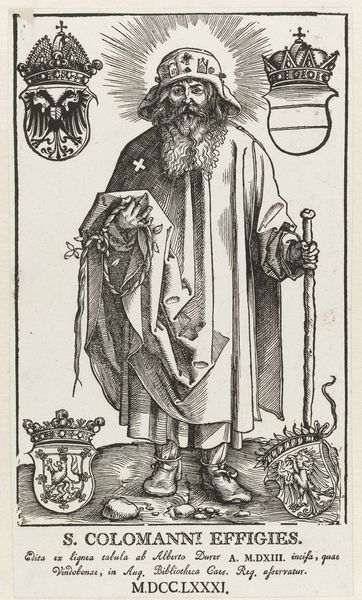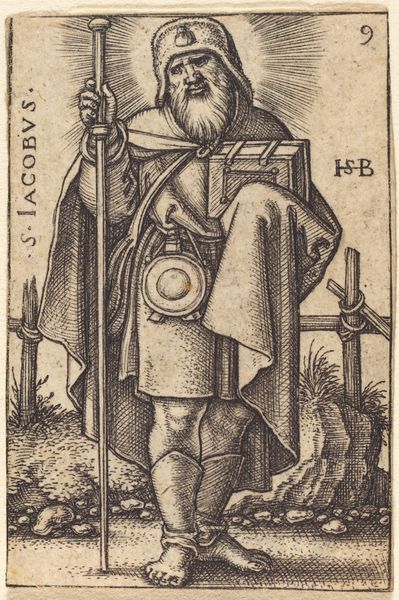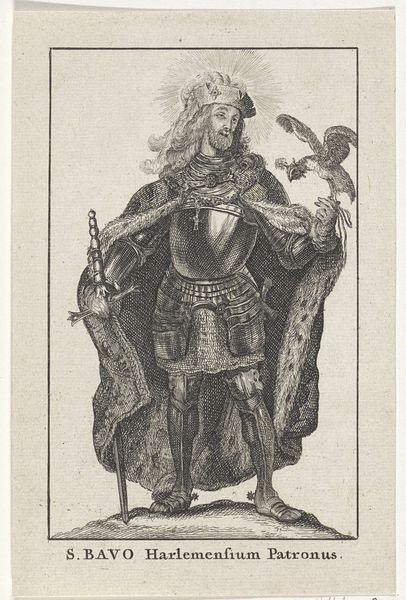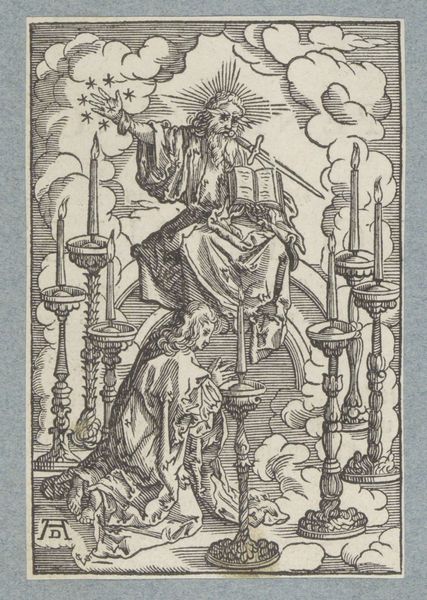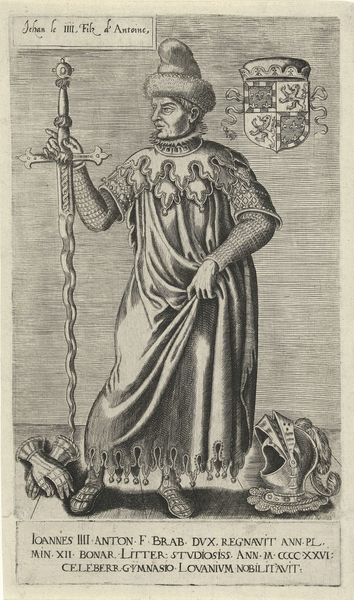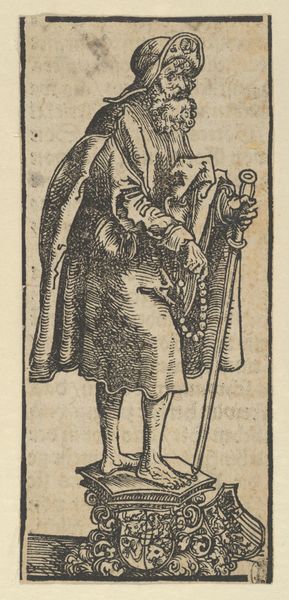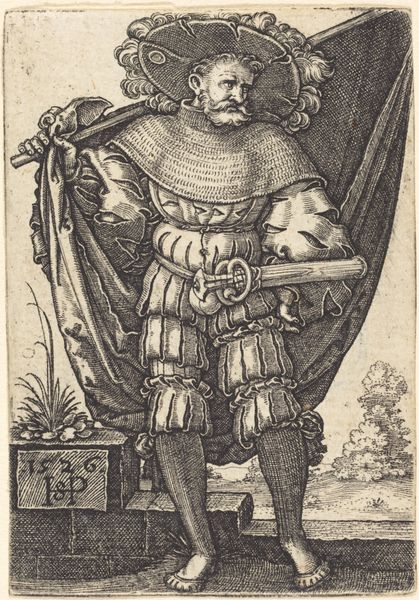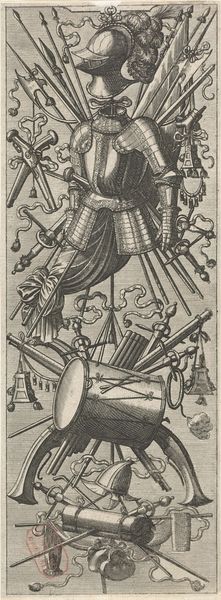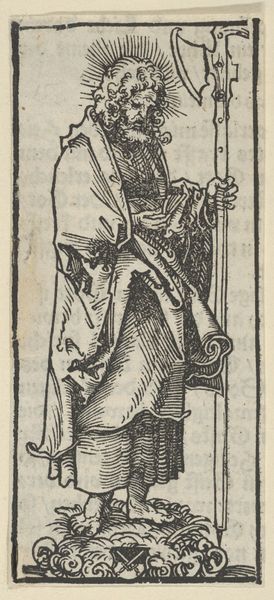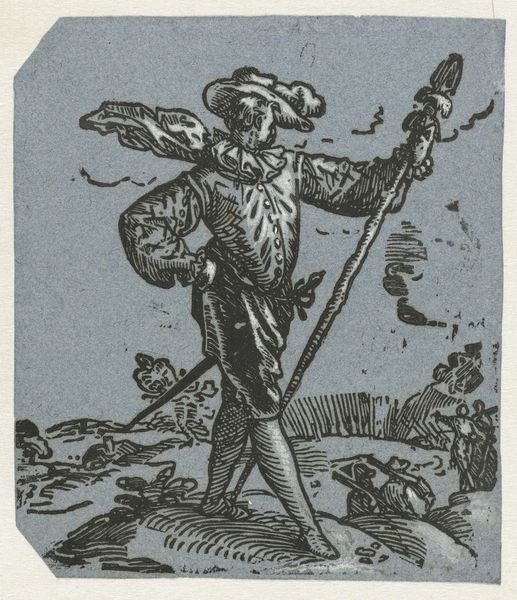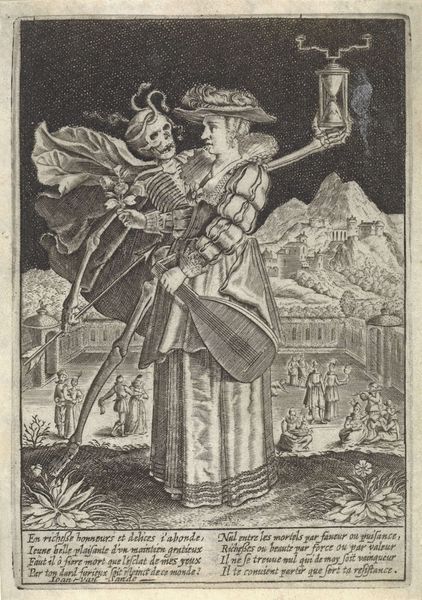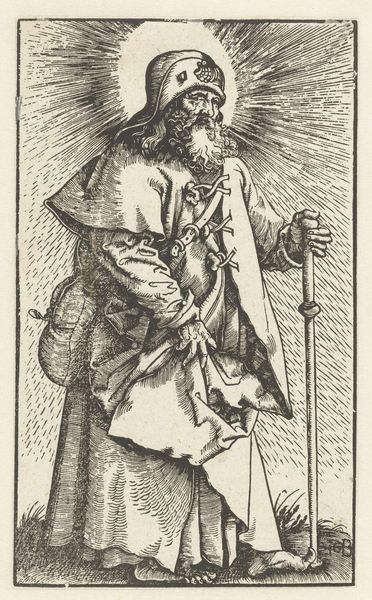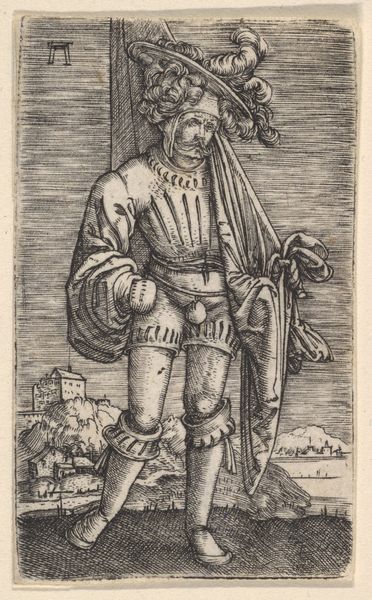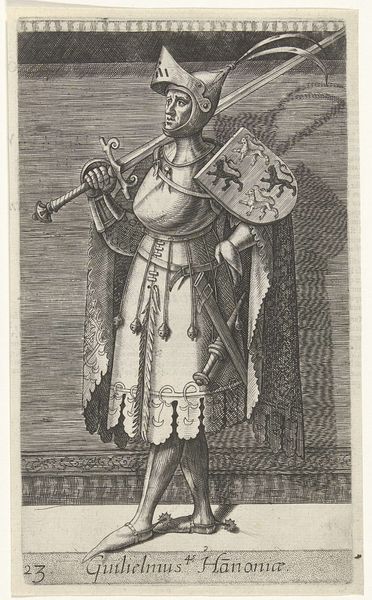
print, engraving
#
portrait
#
baroque
# print
#
figuration
#
line
#
history-painting
#
academic-art
#
engraving
Dimensions: height 109 mm, width 82 mm
Copyright: Rijks Museum: Open Domain
Curator: What strikes me first is the stark contrast created by the engraving. The detail is impressive. Editor: Indeed. This print, created by Christoffel van Sichem II between 1645 and 1646, is titled "Man in harnas met wapenschild"– Man in armor with coat of arms. And its history speaks volumes. Curator: Looking at it from a formal perspective, I'm fascinated by the textures he achieves solely through line. The rigid armor contrasts so vividly with the softer, almost whimsical feather in his cap. Editor: And that contrast highlights the tension inherent in portraying power during this period. The armor isn't just protection; it’s a symbol of class, of dominance, heavily intertwined with military expansion and colonialism. Who benefits from the projection of this image? Curator: True, but consider how van Sichem uses line to create a sense of depth. The cross-hatching to build tone, and how the linear perspective creates a stage upon which the figure resides. Editor: The setting, a quaint little village scene. The composition is not accidental; the symbolism of protection, hierarchy, religion, are being staged together. I would argue that we need to read the image for the construction of masculinity during the Baroque period. Curator: The execution is certainly noteworthy; notice how van Sichem pays close attention to the pattern created by the armor, offsetting it with areas of open space such as around the head of the figure, a clear aesthetic choice, don’t you think? Editor: It’s definitely artful propaganda. We see this trope of the powerful man legitimized by ancestry and valor constantly reproduced at this time. It tells us about anxieties around authority. The artist perpetuates these narratives whether intentionally or otherwise. Curator: So, while our readings might differ, one emphasizing aesthetic intention and the other emphasizing cultural critique... Editor: It proves how a single artwork can offer such divergent yet valid interpretations. It prompts crucial dialogues that weave technique, history, and social discourse.
Comments
No comments
Be the first to comment and join the conversation on the ultimate creative platform.
